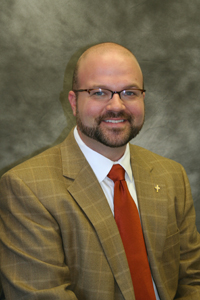By Jeff Brumley
Pastors and scholars familiar with a new book about liturgical worship say its publication signals the practice’s spread in Baptist churches who realize ancient Christian practices are inherently missional and may lure younger generations to the faith.
Gathering Together: Baptists at Work in Worship, is a collection of essays with an index containing resources including creeds and procedures for employing sacraments.
“It represents an increasingly widespread Baptist recognition that our tradition by itself is not sufficient,” said Steve Harmon, an adjunct professor of Christian theology at the Gardner-Webb University divinity school and author of Towards Baptist Catholicity: Essays on Tradition and the Baptist Vision.

Harmon, who also endorsed the new book of essays and practices, said its release this month coincides with growing enthusiasm for liturgical practices among divinity students and reports of churches blending contemplative forms into existing worship styles.
“My sense is it’s slowly picking up steam instead of being in the same churches,” he said.
Harmon isn’t alone in his intuition. A number of other pastors and scholars, some of whom penned essays for the new book and some who didn’t, say the growing missional movement in American Christianity may well be the catalyst for the spread of liturgical worship in Baptist churches.

Steve Harmon
Those experts also cite anecdotal and published reports that Millennials and other young people are gravitating toward high-church traditions, turned off by what they see as gimmicks and fads in hyper-contemporary worship.
And when it comes to Baptists, it may be catching on also because younger people aren’t hung up on the anti-creedal mentality that has long dominated the church.
Drawn to liturgy
“It attracts young people,” said Rodney Kennedy, pastor of First Baptist Church in Dayton, Ohio, and co-editor of Gathering Together. “And that gives hope for the movement because young people don’t have the same historical conscience of Baptists being anti-Catholic.”
Kennedy referenced his own experience with college students and also a 2013 essay by blogger and author Rachel Held Evans in which she describes what a turn-off modern worship can be.
“In fact, I would argue that church-as-performance is just one more thing driving us away from the church, and evangelicalism in particular,” Evans said in the CNN Religion blog posted in July.
“Many of us, myself included, are finding ourselves increasingly drawn to high church traditions,” she added, “precisely because the ancient forms of liturgy seem so unpretentious, so unconcerned with ‘being cool,’ and we find that refreshingly authentic.”
Liturgy also makes church attractive because it fosters a sense of community, said Amy Butler, pastor at Calvary Baptist Church in Washington and author of “Liturgical Ties of Community,” one of the book’s 10 essays.
Reciting creeds and passages of Scripture, viewing and participating in communion as a sacrament and other ancient practices intentionally promote congregational unity, Butler said.

Amy Butler
That sense of connectedness is magnified when participants remember that other congregations are following the same practices, she said.
“Liturgy connects us in a more global way to the larger confessing community.”
Butler said she finds many people are drawn into her church in search of a world and experience utterly different from the one outside.
“People are seeking something sacred and divine and ritualistic, and church is one of those places where they can find it,” she said.
‘What God is due’
That characteristic of ritual is what makes liturgical worship fundamentally missional in nature, said Cameron Jorgenson, professor of theology at Campbell University divinity school and author of the essay titled “The Missional Heart of Liturgy.”
The growing missional movement is driven by the idea that God is at work in the world and the church must discover that work and find ways to join in, Jorgenson said.

Cameron Jorgenson
That God-first mentality is the spirit behind ancient worship, which functioned to offer praise and worship to the creator, not to uplift participants or evangelize newcomers.
“It’s not about drawing a crowd, but giving God what God is due,” Jorgenson said.
All that said, American Baptist minister and blogger Tripp Hudgins said it’s way too early to declare that liturgical forms are taking hold across the Baptist world.
While Kennedy said he envisions a follow-up book that will function as Book of Common Prayer for Baptists, Hudgins said it will take more than that to get Americans on the same page liturgically.
“You need a critical mass” for that to happen, said Hudgins, who is working on a doctorate in liturgics and musicology at the Graduate Theological Union in Berkeley and blogs at anglobaptist.org. Critical mass would likely include larger, flagship churches setting the example by adopting liturgical forms, he said.
But there are signs that such churches are increasingly inching that way with mid-week contemplative services, Taize programs and by blending liturgical elements — like reciting a Psalm together — into the Sunday morning lineup.
Plus, it’s increasingly common to find members of congregations to favor the practices even if they aren’t used in church. “There are a lot of us,” Hudgins said.
Kennedy said he believes Baptists will increasingly welcome liturgy as they are exposed to it. At his church, communion is offered weekly, and earlier this year even included wine as a neighboring Episocpal parish participated in worship.
“I have learned that … Baptist people will be receptive to it, but it just takes time,” he said.
